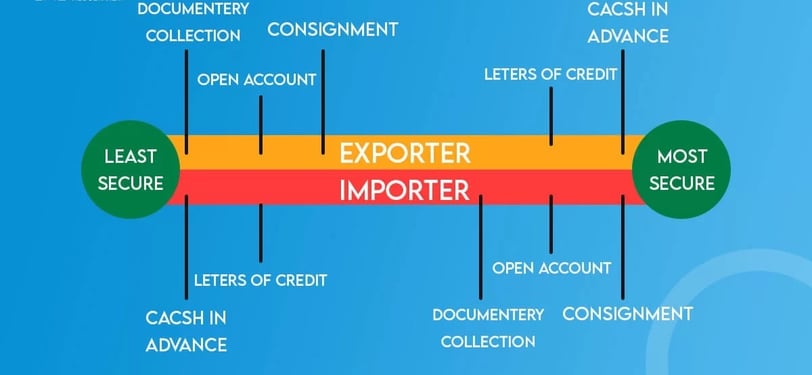Mastering Telegraphic Transfer (T/T) in International Trade: A Comprehensive Guide
Explore the intricacies of Telegraphic Transfer (T/T), a key payment method in global commerce. This detailed guide covers everything you need to know about T/T, including how it works, its benefits, potential drawbacks, and best practices for ensuring secure and timely transactions in international trade.
1/3/20243 min read


Understanding Telegraphic Transfer (T/T) in International Trade
In the realm of international trade, payment methods are crucial for ensuring that transactions are secure, reliable, and timely. One of the most common methods used by businesses worldwide is the Telegraphic Transfer (T/T), also known as wire transfer. Understanding how this payment method works and its implications in trade can greatly enhance the efficiency and security of your transactions.
What is a Telegraphic Transfer (T/T)?
Telegraphic Transfer, often abbreviated as T/T, is a method of electronic payment used primarily in international trade. It involves transferring funds from one bank to another through a secure network, typically using the SWIFT (Society for Worldwide Interbank Financial Telecommunication) system. This method is widely favored due to its speed and security, making it an ideal choice for businesses engaged in cross-border transactions.
How T/T Works in International Trade
Initiating the Payment
The buyer instructs their bank to transfer a specified amount of money to the seller’s bank account. This instruction includes details such as the recipient’s bank account number, the SWIFT code of the receiving bank, and any reference details related to the transaction.
Processing the Transfer
Once the buyer’s bank receives the payment instruction, it processes the transfer through the SWIFT network. The funds are debited from the buyer’s account and credited to the seller’s account. This process can take anywhere from a few hours to several days, depending on the banks involved and the countries of origin and destination.
Confirmation and Settlement
After the transfer is completed, both the buyer and the seller receive a confirmation from their respective banks. The seller can then proceed with fulfilling the order, knowing that the payment has been securely received.
Advantages of Using T/T in Trade
Speed
T/T payments are processed relatively quickly, often within one to three business days. This speed is particularly advantageous in international trade, where timely payments are crucial for maintaining the flow of goods and services.
Security
The SWIFT network used for T/T transactions is highly secure, reducing the risk of fraud or errors. Both parties can track the progress of the payment, providing peace of mind that the funds are being transferred correctly.
Global Reach
T/T is a globally recognized payment method, making it a versatile option for businesses dealing with partners in different countries. Its widespread acceptance ensures that businesses can engage in international trade without worrying about payment compatibility.
Potential Drawbacks of T/T
Cost
While T/T is secure and fast, it can also be expensive. Banks typically charge fees for processing these transfers, which can add up, especially for businesses making frequent international payments.
Currency Exchange
International T/T payments often involve currency exchange, which can result in additional costs or fluctuations in the exchange rate. Businesses must be mindful of these potential costs when using T/T for cross-border transactions.
Processing Time
Although T/T is relatively fast, it is not instantaneous. Processing times can vary depending on the banks involved and the countries between which the transfer is made. In some cases, delays can occur, which might affect the delivery of goods or services.
Best Practices for Using T/T in Trade
Clear Communication
Ensure that all payment details are communicated clearly and accurately between the buyer and the seller. This includes the correct bank account numbers, SWIFT codes, and any reference information related to the transaction.
Understanding Fees
Before initiating a T/T, both parties should understand the fees involved and who will bear these costs. This can prevent misunderstandings and ensure that the correct amount is transferred.
Tracking the Payment
Both the buyer and the seller should track the payment through their banks. Keeping a close eye on the transaction can help identify any potential issues early on, allowing for timely resolution.
Conclusion
Telegraphic Transfer (T/T) is a reliable and secure payment method that is widely used in international trade. By understanding its benefits and potential drawbacks, businesses can effectively manage their international transactions, ensuring that payments are made on time and goods are delivered without delay. For businesses looking to expand their global reach, mastering the use of T/T payments is a critical step toward successful international trade.

